QuestionI have a 4 week old tank that I stocked too quickly. However two fish have been removed so the stock is good now I think. I did over feed at first, now have gone down to once a day. THe past two or three days the nitrites have been 3.0. I did a 25% water change with gravel vacuum last week. A few days a ago vacuumed lightly and did 25% water change. Then yesterday, I did about 50 % water change because some things I read said that. NOw, I think I should have just done 20% or so each day. Should I do anything today since I just did 50%? I also added aquarium salt yesterday a little the days before. I didn't use the full dosage in one day. I spread it over three days after the water changes. I've read that the nitrites should go down with water changes, but should I do like 15% tomorrow and every day until they come down? Also, should I buy an extra air pump and bubble stone? Do I need that to help with the nitrites? Also, the other testing levels are: nitrates 20 nitrites 3.0 ph 7.0 alkalinity 120 and fairly soft to hard water temp is consistent 76 can't seem to get higher. The heater is for 10-30 gallons, but I don't think it's powerful enough. I have one red-tailed shark, 2 giant danios, 1 dwarf gourami, and one pink gourami -- all still small in size
AnswerHi Ingrid,
Your tank does need a bit of work. For starters, I would suggest you change 50% of the water daily, 25% daily being minimum. As long as the temperature of the new water is close and you are using a proper dechlorinator (that detoxifies both chlorine AND chloramine) you will only be helping, not harming. The heater sounds a little Mickey Mouse, and ought to be replaced with a better heater of 100-150 watts, or supplemented with another heater, since it appears that it cannot do the job by itself. There is no hurry on this, since 75-78 is a fine temperature, but you need heating that you can rely upon (for example, should you ever need to treat for ich) in your main tank.
Extra aeration is nice, but is not essential in your setup (cooler water holds more oxygen)...the most important thing is that you do those daily water changes to dilute the toxic ammonia and nitrite. The aeration will not help with the nitrites, but it will make your fish more comfortable simply because it will oxygenate your water (the bubbles push the air from the bottom to the top, adding circulation). Truthfully, a powerhead at the surface does loads more to aerate the water than the average airstones or bubble wall!
The aquarium salt (which is just plan old non-iodized sodium chloride, same as kosher salt, pickling salt, sea salt...) is only useful in that it helps the fish deal with nitrite toxicity. 1 tablespoon per 5 gallons is fine for now, but you should discontinue it once your tank has 0 ppm of ammonia and nitrites.
You don't mention your filtration, but you ought to have at least 6x turnover - that's 180 gallons per hour - considering you are going to have a heavy biological load. There are other problems with your stocking scheme, too. A red-tailed shark really grows too large for a 29 gallon tank and gets aggressive. It does not tolerate its own kind, but hopefully you are aware of this! The pink gourami grows very large (supposedly it can exceed 8") and is also territorial, the dwarf gouramis of nowadays tend to be sickly (Google dwarf gourami disease for more information) and giant danios need schools, not pairs, to thrive, and also need a long tank since they are frenetic with their pacing. A 55 gallon (4 foot tank) is a minimum, in my opinion. However, it sounds like you are new to this and made some beginner mistakes. Hopefully, your pet store or fish store will accept your trade-ins...I see trade-ins in your future!
Bottom line is this:
1. Do daily water changes. 25% to up to 50% daily, with dechlorinator added to make the new water fish safe.
2. Feed very little, one meal per day (a pinch of flakes smaller than a quarter, pellets about the size of a dime) and low protein foods if possible. That is, vegetable or algae-based foods (such as Spirulina flakes, cooked peas with the skins off) since this will not contribute to your ammonia/nitrite problem the way meaty foods will.
3. Review filtration. 180 gph is a must, but I would recommend you exceed this...300 gph flow would not be too much. Check your filters, you can Google the names of them to find out the gph. You really need to ensure your filter has adequate biological media to provide biological filtration...many filters, especially the "cartridge" type, focus on chemical (carbon) and mechanical (filter floss) but not biological filtration, which is by far the most important.
I hope those suggestions help. Check out these sites:
http://www.firsttankguide.net
http://freshaquarium.about.com
http://badmanstropicalfish.com
http://www.wetwebmedia.com
I refer folks to all of these sites on a daily basis. Trustworthy sites and forums (along with books on freshwater fishkeeping) will make your life a ton easier, since you aren't born learning this! If you have any questions feel free to write back, although I will be going on vacation for two weeks starting this Sunday.
Take care,
Nicole

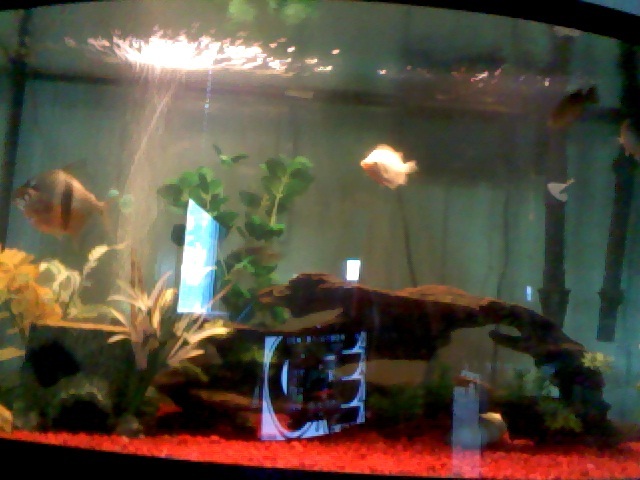 treatment for cat fish
QuestionQUESTION: hello,i have a 46 gallon tank with 2
treatment for cat fish
QuestionQUESTION: hello,i have a 46 gallon tank with 2
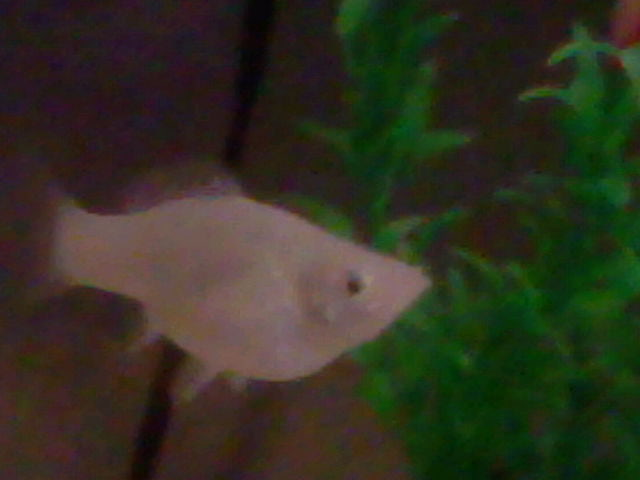 hidden
QuestionQUESTION: its me travis again the molly looks l
hidden
QuestionQUESTION: its me travis again the molly looks l
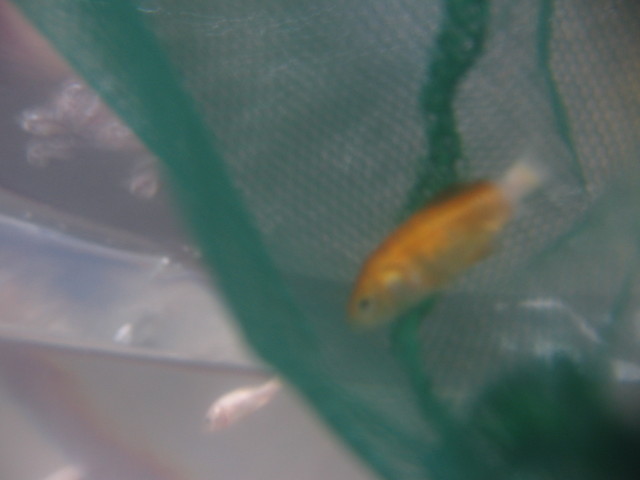 are my fish cannibles?
Question
Bad Tail
My fish are acting very strange. I ha
are my fish cannibles?
Question
Bad Tail
My fish are acting very strange. I ha
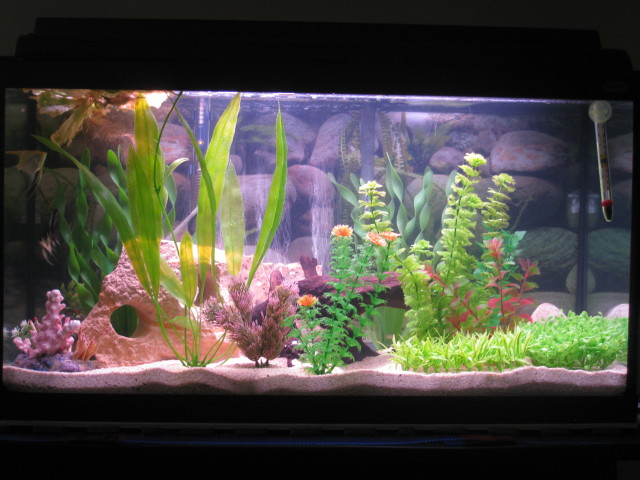 new aquarium
Question29 pic
QUESTION: does my aquarium look g
new aquarium
Question29 pic
QUESTION: does my aquarium look g
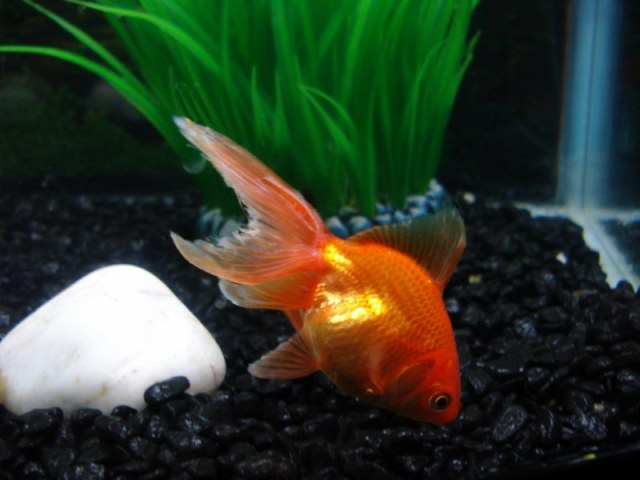 Goldfish - tank move - fin rot
Question
Professor the fantail
Hi,
I was given three f
Goldfish - tank move - fin rot
Question
Professor the fantail
Hi,
I was given three f